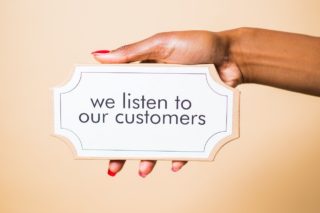Today, many people have elected to allow their creativity to flourish. Many people have found that they can pursue their passion for creation and have discovered multiple outlets to share this passion with others. These people are what we know as “Content Creators” and some of them who are fortunate enough have been able to use this passion for creation to make a living or earn money.
These content creators have made their passion their business and people who appreciate what they create can show their appreciation by supporting that business. And in the digital age, content creators have become more prominent with the popularity of social media such as Youtube and Twitter, allowing them to share the products of their passion and to earn from them as well.
However, being a content creator in such a connected age of technology calls forth some risks towards your content. The most notable risk is the danger of having your content stolen, copied, or used without your consent.
These dangers are often the root of many conflicts between content creators and the people who support them. It can lead to lawsuits, with content creators, especially those who have turned their content into their main source of income, who can commit legal action due to the endangerment of their content by either theft or misuse. Situations like these are the ones that often devolve into controversies that will prove to be costly to both the resources of all parties involved.
Thus, to avoid these problems concerning your content, we have listed some tips to help you ensure that your work is safe from any dangers of theft and misuse by other people.
Make your work distinct
It might be a small detail to keep in mind, but having a distinct style in your content will not only provide you an identity as a content creator but a distinct style can also protect you from people who want to copy or misuse your work.
When you create content, especially if you are working with visual art, you should make a certain element of your work distinguishable — one that can be identified through all your content. It can be the way you draw a specific element of the work or maybe visual or auditory flourishes that will help others connect the work to you. In this way, audiences who are familiar with your work can easily identify your work even if it is not published or posted by you.
Sign your work
If the first tip is not entirely applicable to you because you work with several styles of visual art or your work cannot have distinct visual styles, then it is advised to sign your work with your name or your alias. You can also employ a translucent symbol or signature on your work which is called a watermark to identify your work.
Signatures are easier to identify than an art style, which is why more people opt to use signatures and watermarks to identify their work on social media and other platforms where they share their work.
Usually, for visual art, signatures are found in a discreet area of the content so that does not obscure the art they are showing. When you place your signature, try to keep your signature in an area of the content where it cannot be easily removed while maintaining a discreet presence.
You can also use watermarks as the translucent nature of the mark can allow more freedom in placing it over the content, which makes it difficult to obscure or remove in the case. For non-visual art such as written work and audio work, signatures are often written or spoken at the beginning of the content.
Register your work
Another way to protect your content is to register for a copyright. This is often used more for video content and original works such as movies, series, novels, and even music.
You can register your work to have it legally recorded as your intellectual property. This will not only bind the content to you as its creator but will give you the right to take action if your content is stolen, copied, or misused.
By registering a certain work to copyright, you as the content creator, have the sole right to reproduce, reiterate, display, and advertise your work to the public. Others who perform any of these actions without your written assignment and approval can face legal action as doing so is considered a federal crime.
Keep in mind, however, that you can only register content for copyright. You cannot copyright ideas and processes that were used to make the content made.
Make written agreements with co-creators
When collaborating with other content creators, it is in the interest of everyone involved to ensure that their work on the content is properly recognized and will not be misused. Thus, to ensure this, it is advised that all involved co-creators draft a written agreement that details the different terms and conditions for using the content they will make and the extent of their participation.
While it may appear to be a tedious task, securing a written agreement that is signed by all co-creators can ensure that no misunderstandings and controversies arise from the use of the content. It allows you to be sure that your work in that collaborative effort will not be mishandled by other creators. It also helps other creators trust you with their efforts in that collaborative work as well.
If complications do arise, you will have a written agreement that can be used as evidence to prove their compliance with the agreement and explain how it has been breached.
Copyright License Agreement
If you have already copyrighted certain content of yours, then it is advised that you familiarize yourself with and use a Copyright License Agreement. This document allows you to grant certain people you trust the right to use your content. Usually, content creators enter agreements like this when they want to commercialize their content or have their content handled by another entity with different expertise
This document defines the specifics of what you will allow the person you are licensing to use your content. You can customize it and add special details on how to use your content. For example, you can make it a term to not use your content for any type of political advertising, or maybe to advertise controversial topics. By putting in details like this, you will have power over how your content is shared with the public by other entities.
View other relevant agreements here
Conclusion
In the digital age, one of the most significant products that you create is intellectual property. Thus, it is good to keep your ideas safe using a variety of methods. Some processes might be more difficult compared to others and the process of securing safety might take a long time, but in the long run, having your intellectual property secured from any form of misuse will mean fewer issues and conflicts arising from your content. It is not enough to simply create the content, you must also protect it so that its value is maintained.



